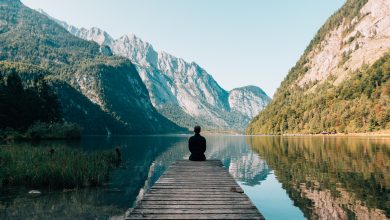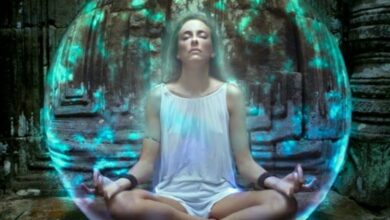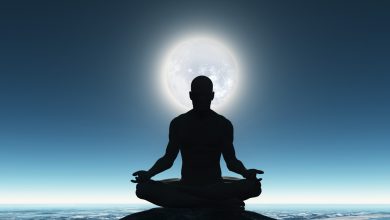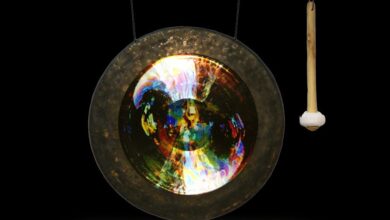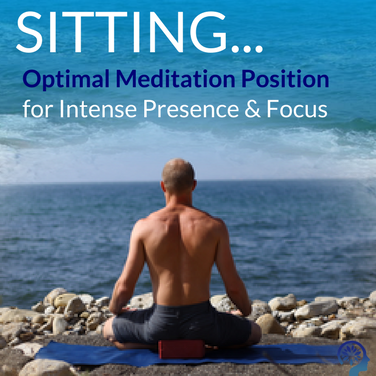
Do I Need To Sit A Certain Way
What is meditation posture? We can answer that by defining what meditation is: meditation is a state of consciousness, of stillness, where you are observing your thoughts and emotions without reacting, letting them pass by like clouds in quiet light. The word comes from the Sanskrit term ‘medha’ which means “consciousness” and ‘aksha’ which mean “serene”. There is a difference between meditative states of mind and those of day-to-day life, but the principles are essentially the same.
To start meditation, it’s important that you choose a comfortable position and environment. The objective is to relax and enjoy calmness, not physically discomfort. Don’t overdo your posture as it can cause strain and become uncomfortable after some time, this made it almost impossible to focus on the present moment. Here are some of the pointers to take note of when are meditating.
Posture Pointers
- EYES gaze slightly downward, 4 to 6 feet in front of you or focus on an object. Simply closed your eyes.
- CHIN slightly tucked to keep your cervical spine aligned. ( Feels like someone is pulling your hair on the top of your head up, towards the sky.)
- SPINE follows natural curvature—upright, yet natural. (Avoid slumping, slouching, or over-straightening your back)
- Tongue should be held against the upper palate.
- lips should be slightly apart and the teeth not clenched (Imagine a slight smile). Breaths through the nose.
- Shoulder relax down and pushed slightly back, this opens up your chest.
- Hands can be rested on your laps or legs. Face your palms up to invite in new energy or face your palms down to create a grounding feeling. You can also try a hand mudra, which is a hand gesture with symbolic meaning.
Choose A Meditation Position
Beginners often feel awkward and uncomfortable during their meditating session but, it is perfectly fine. Getting the ideal meditation posture takes some time and a few trials and errors. There is no one size fits all approach. Don’t be afraid to try out various postures that fit well into your unique circumstances from time to time.
Sukhasana – Easy Pose
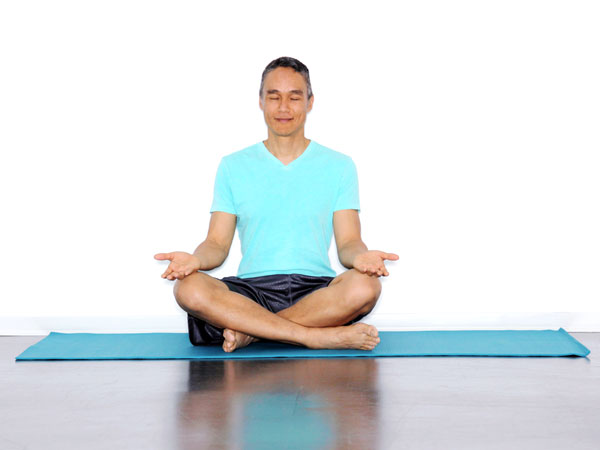
One of the easiest poses to perform, simply cross your legs like what you did as a child in school. It is advisable to use a cushion, pillow, mat or folded blanket to creates a downward angle. Sitting on them helps to tilt your pelvis forward and elongate your spine. If your knees are lifted, place blocks or pillows underneath them to alleviate pressure in your hips and knees.
If you have problems crossing your legs, you can use a chair. Just be sure to sit away from the back of the chair and place your feet firmly on the floor, aligned with your hips and knees. You can also use pillows or bolster to support your back.
Siddhasana - Burmese Pose

If you have been meditating in Easy Pose and want to try something a bit more challenging, the Burmese Pose may be the best option for you. To do the Burmese Pose, bend your knees like you’re coming to Easy pose, but instead of crossing your legs, lay your feet on the ground. Bring your inner foot close to your groin, so it touches the inner part of the opposite thigh. Lay the outer foot in front of the inner foot. Sit up straight, ensuring correct posture.
Padmasana - Full Lotus Pose
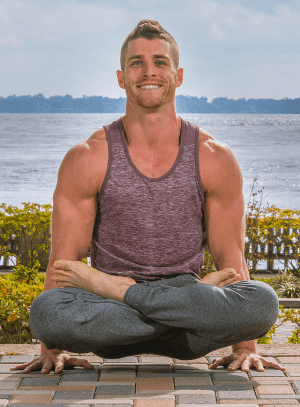
The lotus position is the pose you most likely picture when you think of regular meditators. It’s a popular advanced position because it holds all of your muscles and spine in place, so you don’t have to think about them while you’re meditating.
Sit with your legs extended in front of you. Stretch them out. Feel the energy in your toes, feet, and leg joints. Bend your right knee and place your right foot on the base of your left thigh. Now bend your left knee and place your left foot on the right thigh. Your heels can point upward.
This pose requires a large amount of flexibility and is not always accessible to beginners or even some advanced meditators. If it is not done properly, it can cause serious injury to the knee and ankle. Therefore, don’t force yourself into this pose, it will be wiser to slowly build your way up to Full Lotus using the previously mentioned poses.
Vajrasana/ Seiza / Virasana - Thunderbolt Pose

This is one of an option for those who feel it painful when crossing their legs. To perform this pose simply kneel down laying your shins flat on the ground or yoga mat so you don’t hurt your knees and shins, then sit on the cavity provided by your feet. Keep your spine erect, head straight and hips neutral. If you need to, roll up a towel or place a thin pillow under your ankles for support.
Sasavana - Corpse Pose

Yogis may be familiar with Corpse Pose, which is often done at the end of an asana yoga class. To do it, lie flat on your back with a straight spine and your legs hip-distance apart. Allow your arms to relax by your sides with your palms facing up. Your legs will naturally turn outward. Ensure you have enough space to stretch out.
If Corpse Pose is uncomfortable for your lower back, modify it by placing a pillow underneath your knees. You can also add support behind your head and shoulders using a pillow or blanket. If you’d like, you can place a bolster or yoga block under your back, so you lie at an incline. The incline can also help prevent you from falling asleep.
Final Thought
Your journey of meditation has just begun, be regular in your meditation practice and you will experience many positive changes in your mind and body. Witness your transformation and congratulations on such important opportunities!
